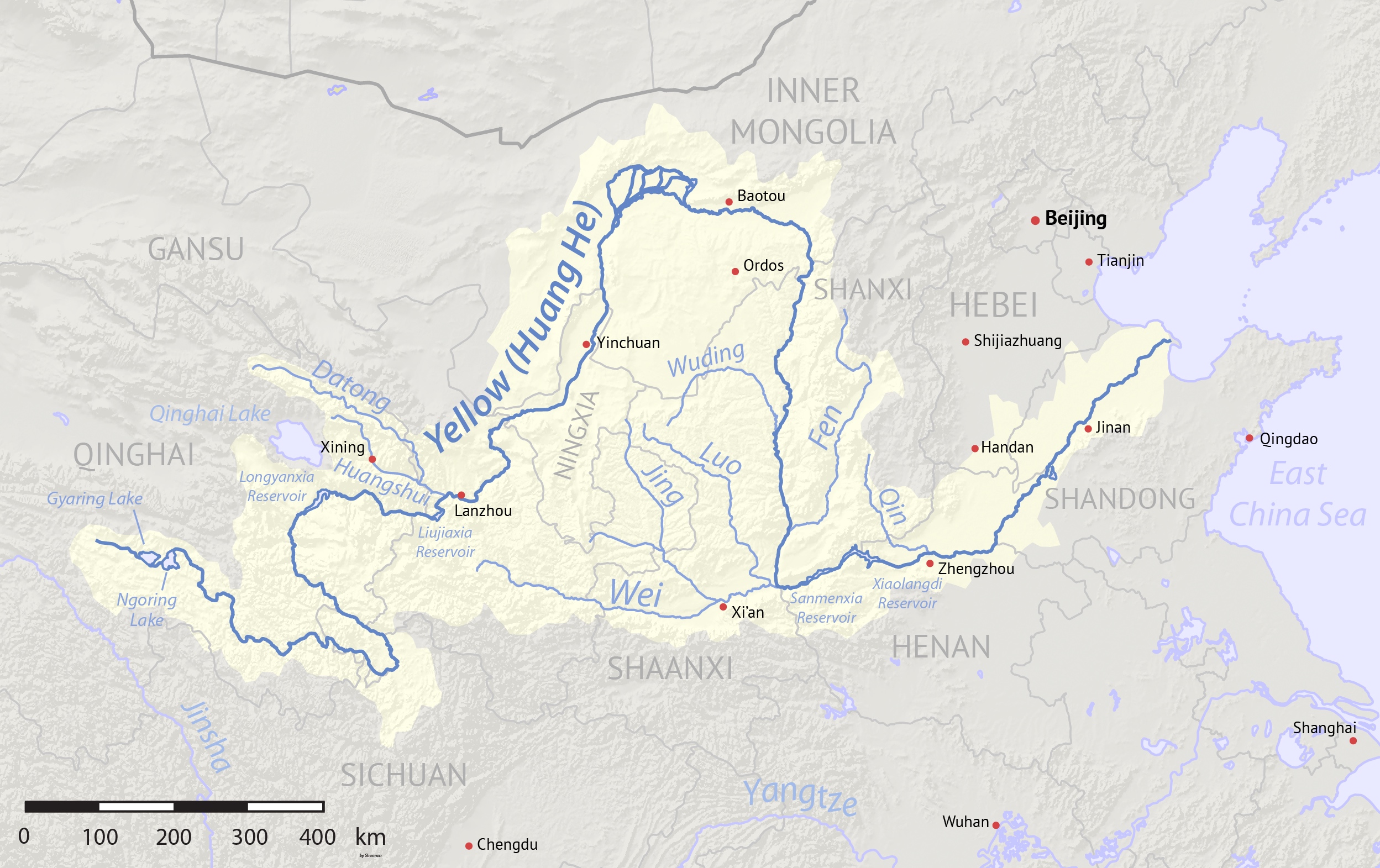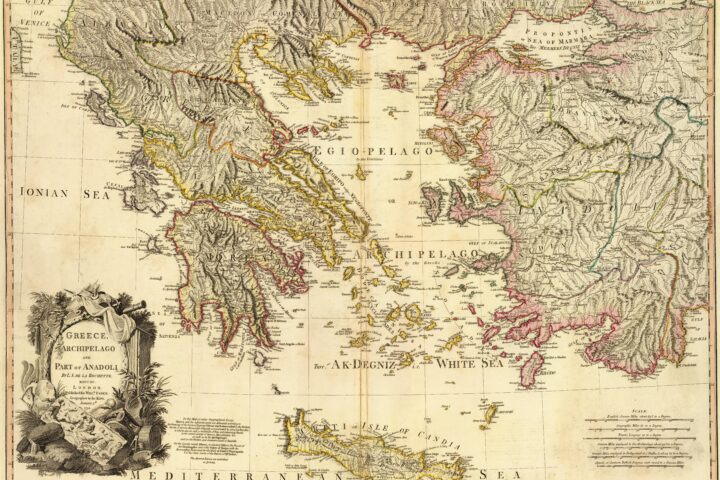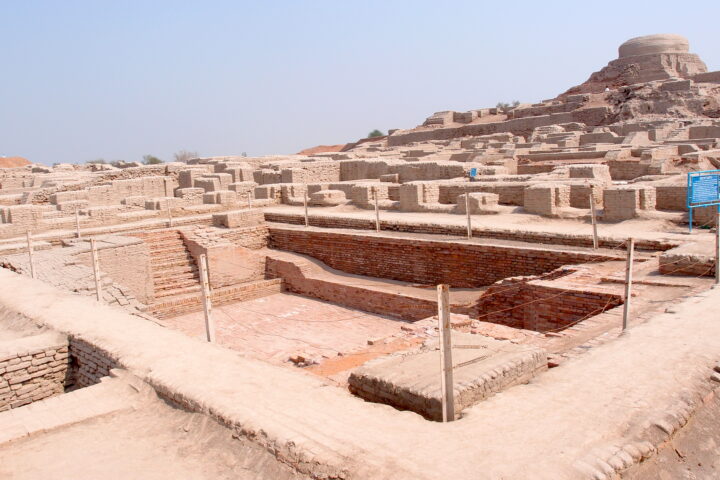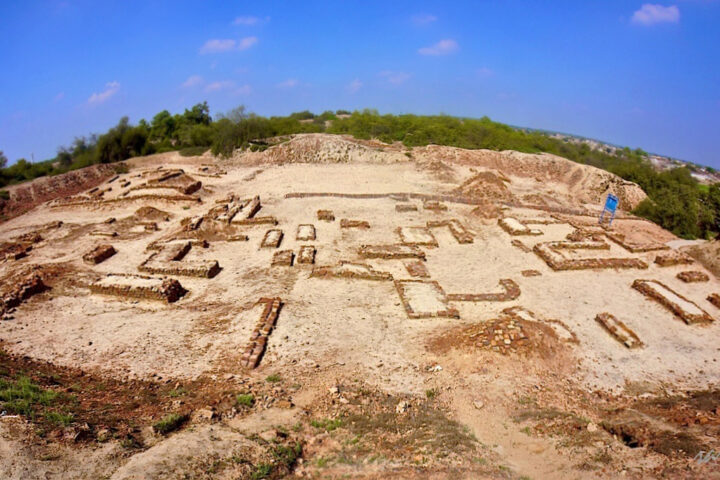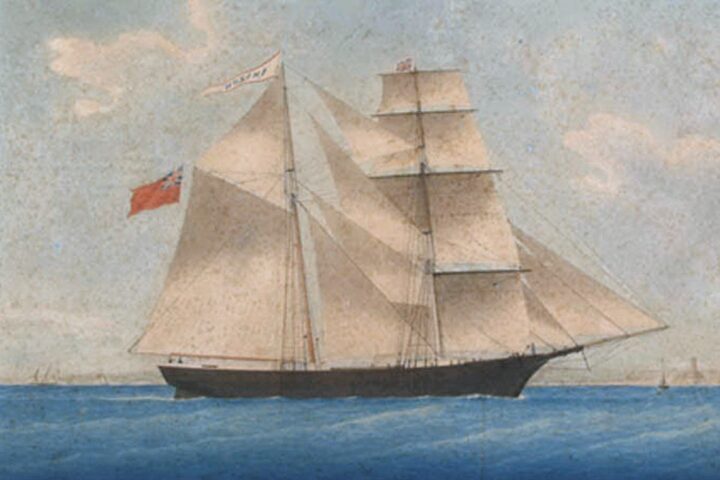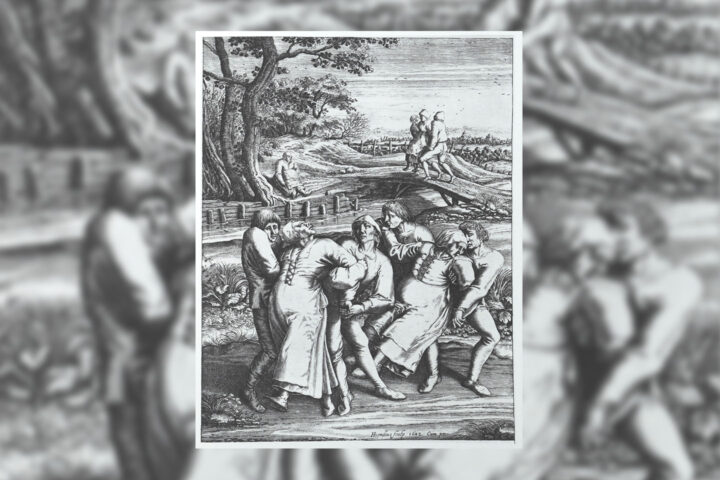Source: Wikipedia_By Shannon1 – Created using Natural Earth and NASA SRTM data, both public domain., CC BY-SA 4.0
The Yellow River often goes by the title “Mother River” for China. It represented a defining role for ancient Chinese civilization: the fertile floodplains provided it with an agricultural bank, but its floods varied between randomness and unpredictability as one setup challenge to human resilience and ingenuity. Here, we look at some of the great achievements of the Yellow River civilization: contribution to linguistic progress, technological, architectural, and philosophical.
Geographical Setting and Historical Context
The Yellow River, also known as the Huang He, is the second-longest river in China, stretching for an estimated 3,900 miles. It runs from the Qinghai-Tibet Plateau in an easterly direction through the Chinese provinces of Qinghai, Gansu, Inner Mongolia, Shanxi, Henan, and Shandong, eventually emptying into the Bohai Sea. Their fertile floodplain in the form of the Loess Plateau was thus an extremely fertile agricultural environment for early human settlements.
Chinese civilization was first developed in the Neolithic period, around 5,000 years ago. At such time, all aspects of agriculture, even making pottery and raising animals as pets, were emerging. Its location near other old civilizations in Mesopotamia and the Indus Valley would have allowed good cultural exchange and diffusion of ideas.
Development of Chinese Characters
Of immense importance and one of its highly valued contributions is the development of the complex system known as Chinese characters. This writing system, often inspired by objects and concepts of the natural world, has survived nearly three millennia but is still the backbone of the Chinese language.
The earliest known Chinese characters are from the Shang dynasty, about 1600-1046 BCE, from oracle bones that carried records of mainly divinations and historical events. As the Zhou dynasty, or period, c. 1046-256 BCE, rose, the number of characters in use increased and became more standardized.
The Chinese characters presented major changes in ancient Chinese social structures and the prevalent culture. They allowed the migration of knowledge, history recording, and literature production. The complexity of the writing system also created a highly literate elite, who eventually governed the empire.
Technological Advances
This Yellow River civilization turned out to be an enclave of genius, and a few groundbreaking technologies were produced that would continue to have an influential impact on the world. The most important of these inventions comprise:
- Gunpowder: Gunpowder discovery has been credited to ancient Chinese times who first used it for fireworks and used it in military applications. Because of this, the origin of gunpowder proved to be the forerunner of a major warfare revolution that catapulted China to take on the pedestal of technological supremacy.
- The Compass: the compass, one of the grand inventions from China, is the easy to use navigation tool. It helped sailors on long voyages understand the route to be taken and was able to chart their way through this significantly longer distance, therefore, expanding the radius of trade and exploration.
- Paper: paper, one of the fantastic inventions from the Han dynasty (c. 206 BCE-220 CE), really made it possible to communicate effectively. The paper-making technology was spread throughout other parts of the world to revolutionize the ways of communication and spreading knowledge.
- Printing: The Chinese also developed early forms of printing, through woodblock and movable type techniques. Through this printing technology, the diffusion of information and growth of education significantly occurred.
In the technological areas, it shows how creative and intelligent the Yellow River civilization is. It has been a contribution to the course of history, as well as in its growing culture and economic area in China.
Architectural Feats
This Yellow River civilization left a high-quality legacy in architectural achievements, such as the Great Wall of China, the Forbidden City, and the Terracotta Army.
- Great Wall of China: This is an iconic structure stretching thousands of miles along northern China built over centuries to protect the empire from nomadic invaders. The Great Wall narrates the repute and power of ancient Chinese engineering talent and defense strategies.
- The Forbidden City: The Forbidden City in Beijing is the imperial palace of the Ming and Qing dynasties. It is a majestic group of buildings, gardens, and courtyards-the embodiment of the grandeur and power of the Chinese empire.
- Terracotta Army: The Terracotta Army dates back to 1974, is a large collection of life-sized terracotta sculptures of soldiers, horses, and chariots. They were meant to guard the first emperor of China, Qin Shi Huang’s tomb.
These architectural marvels express the creative talent and ingenuity of ancient Chinese artisans and engineers. Moreover, they are important symbols of Chinese culture and continue to draw tourists from all over the world.
Philosophical Traditions
Perhaps the two most influential philosophies that originated from the Yellow River civilization were Confucianism and Taoism. They enunciated the plan for understanding human nature, society, and the universe.
- Confucianism: This religion was started by Confucius (c. 551-479 BCE). It centres the foundation for social harmony, reverence for authority, and education. Initially, it stressed the idea of ren, which means “humaneness” or “benevolence.” Confucianism played a foundational role in defining Chinese society and culture for many centuries.
- Taoism: Taoism is the same as Daoism. It originated through philosophy, regarding living in harmony with nature to seek simplicity. It finds its base on the concept of the Tao meaning “the way.” Taoism had implications for many aspects of Chinese life including art, literature, and medicine.
Together with other intellectual currents, Confucianism and Taoism formed the contents of the intellectual materials of the Yellow River civilization, giving value and beliefs to the Chinese people and still influencing Chinese culture very much until now.
The Impact of the Yellow River on Chinese Civilization
The Yellow River, dubbed the “Mother River” of China, was essential in molding the course of Chinese civilization. It provided fertile floodplain conditions to offer good agricultural conditions and, at the same time, gave unpredictable floods as challenges that have been the continuous test for the people.
- Agricultural Development: the alluvial plains of the Yellow River were very fertile, bringing in a food supply that was very secure to the increasing population. Irrigation and terrace farming techniques were developed to maximize returns in harvest productivity while countering the negative impacts of flooding. Agricultural development set the foundation for complex societies and civilizations to evolve.
- Cultural Exchange: The Valley of the Yellow River was one meeting place among the ancient cultures, whereby it had the opportunity to transfer ideas and technologies. Contact with Mesopotamia and the Indus Valley immediately affected the development of Chinese art, religion, and philosophy.
- Political and Social Organization: The Yellow River culture was indeed replaced by a series of dynasties, each building its own peculiar political and social structures. It is during the Shang, circa 1600 to 1046 BCE, that the centralized state was formed and a complicated writing system developed. The Zhou, circa 1046 to 256 BCE, then established a just state policy based on the idea of the Mandate of Heaven and further legitimized the rule of the ruler.
- Environmental Challenges: While the Yellow River did much good, it also presented severe problems. Its flood was so unpredictable that it often resulted in devastation of human civilization, leading to famine and social turmoil. The very population of the Yellow River civilization learned to control the nature of the river flow: it built dikes and reservoirs. However, flooding remained a constant threat to most of Chinese history.
Yellow River Civilization in Contemporary China
The Yellow River civilization still exerts its influence in today’s China. Its impact is seen in the opulence of the country’s cultural heritage, in its political and social institutions, and in its continued efforts at controlling the river’s resources.
It has given the Chinese national identity a rich symbolism: it is the home of the Great Wall, the Terracotta Army, and some of the finest historical tourist destinations around the world. The Chinese language, in turn, comes from the earlier forms of the writing system that the Yellow River Valley was responsible for developing.
Political and Social Institutions: The political and social institutions of modern China have ancestry in the Yellow River civilization. The concept of the Mandate of Heaven, which legitimized the ruler’s authority, continues to influence Chinese political thought. Confucianism, whose philosophy was enunciated during the Zhou dynasty, remains a strong force in Chinese society, shaping values and behavior.
Environmental Issues: Even now, the Yellow River continues to symbolize major environmental issues. Among them are pollution and sedimentation. However, the most pressing issue related to water availability is one of the hottest issues in this region. The Chinese government has undertaken countless measures concerning the protection of the river and its ecosystem, including pollution control programs, water conservation initiatives, and restoring the natural flow of the river.
Conclusion
The Yellow River civilization was indeed one of remarkable developments as far as the culture and intellectual activities are concerned. Its accomplishments in language, technology, architecture, and philosophy have had a profound impact on the world. The Yellow River was China’s “Mother River” and shaped both the Chinese people’s identity and their destiny. Looking back at this ancient civilization, one can appreciate its legacy and how it joins with other human treasures in that endless tapestry of culture.
Sources:

